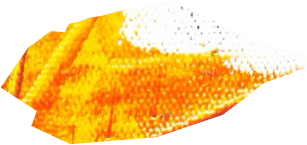If you’ve ever read Shakespeare; you’ve seen it. If you’ve ever seen Shakespeare performed; you’ve heard it. A rhythmic device that makes the lines not only more poetic, but more understandable too: verse. At Park Avenue, we practice a lot with verse. Most of us are not native English speakers and will therefore be speaking with an array of accents. This tool for being understandable to the audience is therefore incredibly important. Would you look at that, dear ol’ Shakespeare taking us into account all those centuries back.
I want to take a moment to show you all the wonderful things that verse can add to your character, besides understandability. What it can mean and say about them, how they are feeling in a soliloquy or how they present themselves to other people. Of course, every character can and should be filled in with your own interpretation but let me show you a place to start using the verse.
I’ll start this first blog with one of the forms most used by the Bard: iambic pentameter.

Iambic is a form used in poetry and refers to a line where the first beat is unstressed, and the next beat is stressed (Weak-Strong). Often, the stressed beat will indicate the more important word. This doesn’t mean that the unstressed beats are not important, and they should also be articulated correctly. Remember, it’s all for the benefit of the audience. Pentameter means a meter with five of these stressed beats and looks thusly:
‘Tis but thy name that is my enemy; Thou art thyself, though not a Montague. What’s Montague? it is nor hand, nor foot, Nor arm, nor face, nor any other part Belonging to a man. O, be some other name!
(Juliette, Romeo and Juliette, 2.2)
Now that we have five important words, you can play with them. Try lifting each one up one by one and see what it does to the sentence, and it’s meaning. Don’t mind the comma’s, focus on the verse, not on the sentence itself. It’s okay if it sounds mechanical at first, better yet, it’s even the point. See this as a first sketch, where we want to have all the dimensions correct before we can focus on the character design, details and shading.

Art by Janna van Leeuwen


